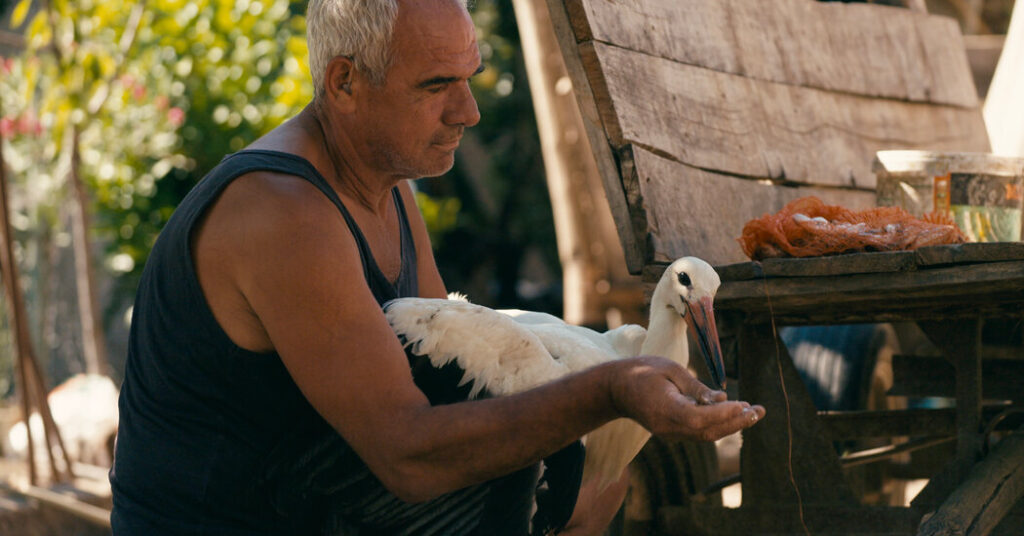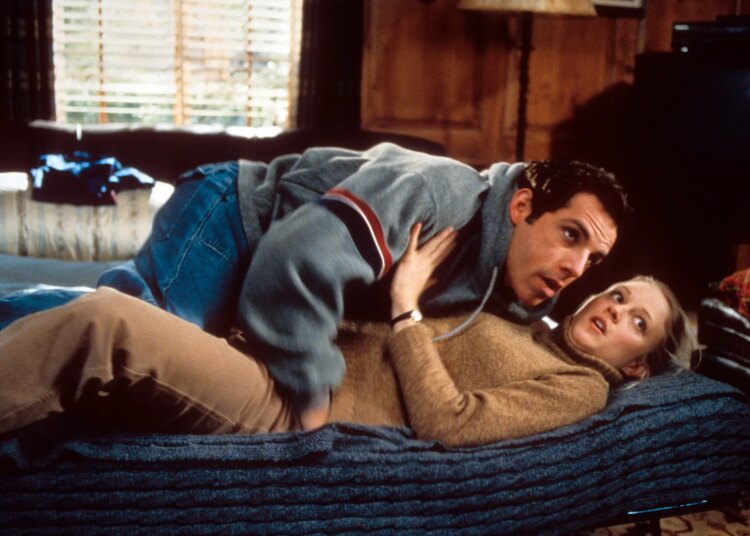To describe a documentary as “magical realism” could seem paradoxical. How could nonfiction also be mythological? But when the raw materials of reality and something more otherworldly are woven together well, it looks a lot like Tamara Kotevska’s “The Tale of Silyan” (in theaters), the lyrical, extraordinary tale of a North Macedonian farmer and his companion, a stork.
“The Tale of Silyan” is part nature documentary, part social issue film, part fairy tale. It’s framed with a local legend, the story of Silyan, a young man who wishes to leave his village. His father considers this a betrayal and curses his son, who turns into a stork and, unbeknownst to his father, lives near the family, watching over them. We hear this lore while observing groups of real storks, which are plentiful in North Macedonia.
Here, they’re in a village in which Nikola; his wife, Jana; their adult daughter, Ana; and her family live. Their families have farmed there for generations. But now the climate is changing, while the market for their crops — potatoes, cabbage, tomatoes, tobacco and more — is drying up. Making a living is becoming more difficult. So villagers are leaving, mostly for Germany, where there’s work.
Nikola and Jana’s son has already left when we meet the family, a departure that wounded Nikola deeply. But as the rest of the family slowly leaves, too, Kotevska’s camera stays with Nikola, who is forced to get a job in a landfill to make ends meet. There, he rescues an injured stork, and that is when his life starts to change.
Kotevska’s 2019 film, “Honeyland,” the first to receive Oscar nominations in both the international and documentary feature categories, also looked at the ways that environmental change, traditional agriculture and migration were intertwined in rural North Macedonia. That film had a dreamy quality that carries over to “The Tale of Silyan,” but this one has a strange wildness to it, thanks to the presence of the storks. They seem like another set of residents in the village, especially as the human population seems to keep dropping. The storks are always watching, like ghosts or spirits, with their elongated proportions and necks that can bend entirely backward.
Some scenes are remarkably intimate — Nikola in his house on a stormy night drying off the stork, who falls asleep on his shoulder — and some are sweeping, which makes it an amazing portrait of a place on many scales. And the legend woven throughout heightens the film’s feeling of truth: The effects of young people leaving and returning on a small, close-knit community have been felt for many generations. The storks have been watching it happen. They’ll probably be watching long after Nikola and his family’s farm are gone.
Alissa Wilkinson is a Times movie critic. She’s been writing about movies since 2005.
The post In ‘The Tale of Silyan,’ the Storks Are Watching appeared first on New York Times.




